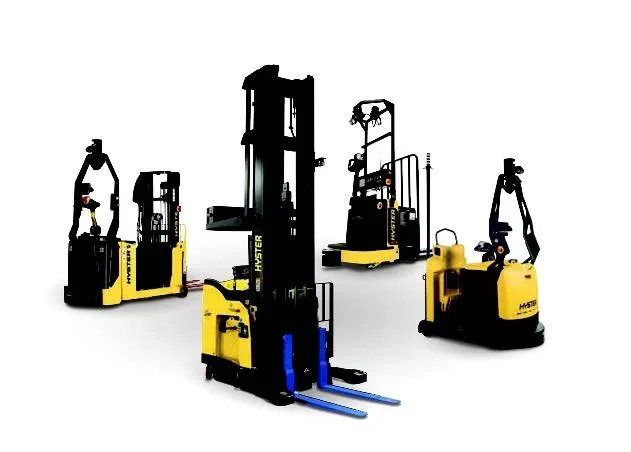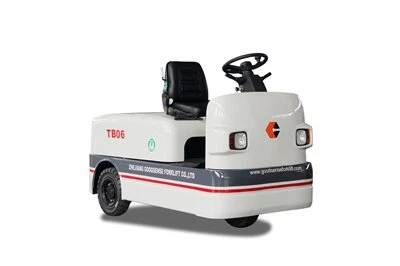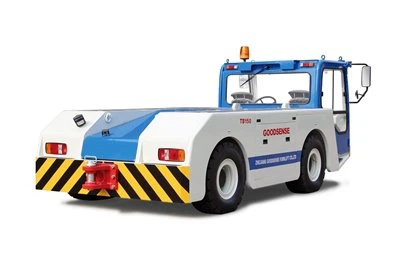

Ground Support Equipment
GOODSENSE FORKLIFT: China First-Class Ground Support Equipment Supplier
Zhejiang Jixinxiang Forklift Manufacturing Co., Ltd. is a modern large-scale machinery manufacturing enterprise that produces forklifts and ground support equipment. Our company has 500t presses, large flame, plasma, laser cutting machines, welding robots, CNC shearing and forming equipment, and over 300 sets of R&D tools. We also have comprehensive testing facilities for complete machine testing such as braking, steering, running-in, lifting, and a standardized forklift test field for simulating vehicle working conditions and type testing.
Why Choose US
Wide Product Range
GOODSENSE FORKLIFT has a complete product range of materials handling equipment, such as forklift, Warehouse Handling Equipment and Ground Support Equipment.
Strong Customer Support
We have more than 100 sales and service subsidiaries, and over 100 abroad agents, so we can offer strong support to our customers.
Strong Quality
In 2019, we were the TOP10 sales volume and TOP 5 exporter in material handling equipment among China original brand.
Reliable Quality
GOODSENSE FORKLIFT has passed ISO certification and various ECM certifications. Pursuing excellence in quality is our business philosophy.

What is Ground Support Equipment?
Ground Support Equipment (GSE) refers to the vehicles, machinery, and tools used to support aircraft operations while they are on the ground. This equipment plays a crucial role in various tasks such as aircraft maintenance, loading and unloading cargo and passengers, refueling, and servicing. Examples of GSE include tow tractors, aircraft tugs, baggage loaders, catering trucks, fuel trucks, ground power units (GPUs) for supplying electrical power to parked aircraft, and air start units (ASUs) for starting aircraft engines. GSE ensures that aircraft are efficiently serviced and prepared for flight operations while on the ground.
Benefits of Ground Support Equipment

Enhanced Efficiency
GSE allows for quicker turnaround times between flights by facilitating rapid loading and unloading of passengers, cargo, and baggage.

Maintenance Support
GSE includes specialized tools and equipment that are crucial for aircraft maintenance and inspections. This helps ensure aircraft are in optimal condition for safe operations.

Safety
GSE contributes to safety on the ground by supporting activities like aircraft refueling, where safety protocols and equipment prevent accidents and spills.

Operational Flexibility
Different types of GSE cater to various aircraft types and operational needs, providing flexibility to handle diverse aircraft configurations and requirements.

Cost Efficiency
Efficient GSE operations help reduce overall operational costs by minimizing delays, improving productivity, and ensuring timely aircraft availability.

Environmental Impact
Modern GSE includes environmentally friendly technologies such as electric-powered vehicles and equipment, reducing emissions and noise pollution on airport grounds.
GOODSENSE GROUND SUPPORT EQUIPMENT TYPES

1. Baggage Tractor
Advanced GOODSENSE technology introduces 2.5/3 ton baggage tractors. Designed clearly to meet indicating vocational needs, the fast traveling speed and small turning radius of the baggage tractor bring prominent operability to any construction plant. What's more, the reformatory shape and fashionable low outline add a complicated contact. When traveling, towing or turning, it's clear the baggage tractor has earned its market as a professional.

4. Aircraft Tractor
Aircraft tractors are specialized vehicles designed to tow aircraft safely and efficiently on the ground. They feature powerful engines and robust towing capabilities, equipped with adjustable tow bars to accommodate various aircraft sizes and types. These tractors ensure smooth maneuverability on airport ramps and taxiways, supporting ground operations by positioning aircraft for maintenance, refueling, and boarding.

2. Electric Tow Tractors
The lithium electric tow tractor from GOODSENSE forklift moves heavy loads fast and securely. Its mobility and operability is key to this; because of its compact size, this electric tow tractor is very utility. The energy-saving and accurate power steering makes any operation easier, even within a small space. This increases productivity. The indurative, one-piece chassis secures all the parts during tough heavy-duty manipulations. In such a way, little vibrations and road noises influence the driver.

5. Passenger Step
The passenger stairs are designed to serve narrow, medium body aircraft with access door sill height between 2200 and 4400 mm. The Airport Passenger Step Vehicle is equipped with a telescopic slope that allows to regulate the height thus ensuring the greatest situations of security and comfort for travelers. The step width is 1290 mm while the platform width is 1990 mm. All walking surfaces are covered in nonskid aluminium and are illuminated by LED lights. The driving and localization carried out from the driver's cabin. The equipment includes the most modern safety and damage prevention systems to protect travelers and the vehicle.

3. Belt Loader
Our belt loader is a high technology product which combines mechanics, electric and hydraulic pressure. The conveyor is fitted with lithium battery and controller, hydraulic system. The belt has characteristics such as large range of rising and declining, stable support, adjustable conveying speed, all these make the conveying of the belt smoother. It also has features such as easy operation, safe driving, convenient maintenance so it is suitable for all types of airplanes.

Necessary Requirements For Ground Support Equipment
Ground Support Equipment (GSE) is crucial for facilitating efficient ground operations at airports worldwide. It must be highly reliable, ensuring consistent performance in various environmental conditions and operational scenarios.
- Safety is paramount, with GSE designed to minimize risks to personnel, aircraft, and infrastructure during handling and maintenance activities.
- GSE also needs to be versatile, accommodating the diverse sizes and configurations of aircraft it supports.
- Efficiency is key, enabling quick turnarounds between flights through swift passenger and cargo handling, as well as timely maintenance operations.
- Environmental considerations are increasingly important, with modern GSE incorporating technologies to reduce emissions and noise pollution.
- Maintenance requirements should be manageable to minimize downtime, while regulatory compliance ensures adherence to international standards for safety and operational performance.
The ground support equipment designed by GOODSENSE has good safety protection settings:
1.Traction Pin anti decoupling protection device.
2.Traction Pin decoupling alarm system.
3.Low brake energy storage alarm.
4.Seat safety switch.
5.The engine has anti second start function.
6.Driver out of position vehicle unable to move.
7.The battery safety system with standard automatic fire
extinguishing device monitors the safety status of the
power battery in real-time.
8.Electronic hydraulic assisted foot brake can still .
guarantee 3-5 times of assisted braking after power
outage.
9.The electrical system with high and low voltage isolation
ensures the safe use of electricity for the entire vehicle.

Maintenance Tips For Ground Support Equipment
- Regular Inspections: Conduct routine inspections of GSE to identify wear and tear, leaks, or any signs of damage. This includes checking tires, hydraulics, electrical systems, and structural components.
- Scheduled Maintenance: Follow manufacturer-recommended maintenance schedules for each piece of equipment. This includes oil changes, filter replacements, and lubrication of moving parts.
- Cleanliness: Keep GSE clean to prevent dirt and debris from affecting performance. Regularly wash equipment exteriors and clean air filters to maintain optimal engine efficiency.
- Storage: Store GSE in a designated area that protects it from weather elements and extremes of temperature. Proper storage helps prevent corrosion and deterioration.
- Training and Documentation: Ensure operators are trained in proper equipment use and maintenance procedures. Maintain detailed records of maintenance activities, repairs, and inspections.
- Fluid Management: Monitor fluid levels regularly, including fuel, hydraulic fluids, and coolant. Keep fluids topped up and replace them according to manufacturer recommendations.
- Electrical Systems: Check electrical connections for corrosion or loose wires. Inspect batteries regularly and keep them charged to maintain reliable starting.
- Safety Checks: Prioritize safety checks before and after each use, including brake tests and emergency shutdown procedures. Ensure all safety features, such as lights and alarms, are functional.
- Component Replacement: Replace worn-out or damaged components promptly to prevent further damage and ensure equipment reliability.











